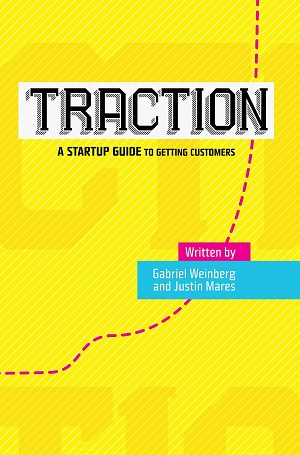Without traction -- sustainable customer growth -- your startup will languish or die. As such, traction should always be top of mind.
To focus your traction efforts, you need a traction goal to work towards. Example goals are 1,000 new users, 100 new customers or 10% market share.
The right goal for you depends on your business. It should be chosen carefully and align with your company's next inflection point. When you reach this goal, what will change significantly? Perhaps you’d be profitable, be able to raise money, or become the market leader.
The importance of choosing the right traction goal cannot be overstated. Are you going for growth, profitability, or something in between? If you need to raise money in 12 months, how much traction do you need to do so? These are the types of questions that help you determine the right traction goal.
DuckDuckGo Example
DuckDuckGo is the search engine that doesn't track you. We saw more than a billion searches in 2013, six years after I founded the company. At DuckDuckGo, our current traction goal is one percent of the general search market. Achieving that goal is meaningful because at that point we will be an entrenched part of the market and receive everything that comes with that (recognition, better deals, PR, etc.).
This traction goal wouldn’t work well for most other companies because usually one percent of a well-defined market is not that significant or valuable. It works in the search engine space because the market is so big and there are so few companies in it. This speaks to the importance of setting a traction goal that is significant for your company.
Before this traction goal, DuckDuckGo had a traction goal of 100 million searches a month, which took us to break-even. Getting to break-even was the significant company milestone that aligned with this traction goal.
Before that, the traction goal was to get the product and messaging to a point where people were switching to DuckDuckGo as their primary search engine and sticking indefinitely. The company significance there was to achieve true product/market fit.
These are big goals, and that's the point. Our traction goals have each taken about two years to achieve. The timescale is not important, however. The significance to your company is important. If the significance you are trying to achieve is profitability and you think you can get there in six months then that’s great!
Focusing on your Goal
Once you establish a traction goal, you can use it to evaluate what you should be working on. If activities are not related to achieving your traction goal, you should not be doing them. If marketing campaigns won't move the needle, you should skip them.
The way I like to think about it is through a framework called Critical Path. The path to reaching your traction goal with the fewest number of steps is your Critical Path. I like to literally draw this path out, sketching the milestones we need to hit to reach our goal.
Some of these milestones will be directly traction related, such as picking and pursuing the right marketing channels as we explain in Traction Book. However, these milestones need not all be traction related, but should be absolutely necessary to reach the traction goal. For example, product features, a redesign or a key hire might all be necessary milestones.
Once you’ve defined your critical path, it’s easy to determine the direction to go in – just follow the path! In particular, work on the first step(s) and nothing else. After these first steps are complete, re-examine your critical path using the knowledge you've gained since the last time you sketched out your critical path.
This method helps you stay focused on your traction goal -- the achievement you determined will be at an inflection point for your company. Everything you do should be measured against your critical path and, in turn, your traction goal. Every activity is either on path or not. If it is not on the path, don’t do it!
Unfortunately, this is easier said than done. Most companies get distracted and stray from their ideal traction critical path. Distractions can be deadly.
Startup traction starts with the right goal, followed by relentless pursuit of achieving it. That's why choosing the right traction goal is so important. What's yours?
This was a guest post based on an excerpt from Traction book, a startup guide to getting customers by Gabriel Weinberg and Justin Mares.